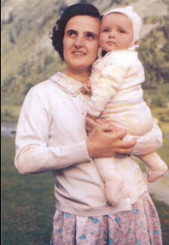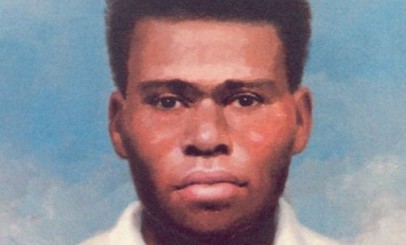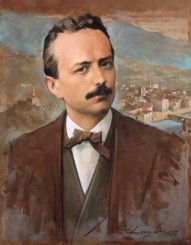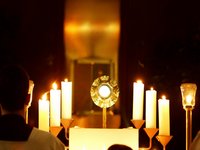Some years back, a book was published called Thoreau: The Complete Individualist. The title raises a question: Is it possible to be a complete individualist?
Consider a life in which there is no common language, no neighbor to lend you a quart of milk, no police officer to protect you from a robber, nor fire fighter to save your burning house – a house, by the way, that you would have had to build yourself.
Imagine a world with seven billion complete individualists, all living in perfect isolation, none of whom can communicate with each other, help each other, fall in love with each other: no spouses, no friends, no families, no children.
It was considerations like these that prompted the Greek philosopher Aristotle, 25 centuries ago, to say that “man is by nature a social animal.” Who could imagine living a life without living in some sort of community, maintaining relationships with other human beings, depending on others for food and clothing and shelter?
But Aristotle went beyond the merely material and social benefits of community. When he sat down to write his book on ethics, he began it by saying simply: “The good is that at which all things aim.” In other words, every person on the planet, everyone who came before us or will come after us, whether consciously or not, aims in their lives to achieve “the good.”
Notice that Aristotle didn’t say “a good” or “goods,” but the good, meaning everyone shares the same good.
What Is “The Good”?
No one has decided to the satisfaction of everyone how “the good” is defined. In the mid-1930s, Fascists found the good to be synonymous with the state. Italy’s Fascist dictator, Benito Mussolini, offered this philosophy in opposition to the philosophy of individualism, which says there’s not one good but many goods, depending on personal tastes.
To the Church, neither statism nor individualism achieve the good, whether the personal good of human beings or the common good of society. A good that does not include God and does not promote a civil society is not a sufficient good at all.
As theologian David Hollenbach puts it, “The full common good exists only in the communion of all persons with God and with each other in God.” To Christians and many others, a life that doesn’t recognize God, who is both the creator and true end of people and societies, is a life without meaning.
When we find meaning, we find fulfillment. But we can’t find fulfillment in isolation. We find it when we love and serve God as well as other people. Not all societies make it possible to do that. Think of highly regimented North Korea, where fulfillment means serving the state alone, or the many other countries where there exists no personal or religious freedoms. Likewise, it’s hard to find fulfillment when we use our freedoms to benefit only ourselves without regard for the well-being of others.
The Church certainly has a clear idea of what constitutes the good life, and anyone who wonders what that is can find it contained in the Bible or in the many forms of Church tradition or by listening to the Word preached at Sunday Mass.
Social Conditions that Promote the Common Good
But instead of trying to impose the good life on people, an exercise with often sorry consequences, the Church offers what it considers to be the social conditions that give people and groups who want to pursue the good life the ability to do so.
What are some of those conditions? Among them is a commitment to peace. War and civil conflict not only affect armies that wage battle, but destroy the conditions of life for civilians as well. For example, the olive branch became a symbol of peace because in ancient Greece farmers wouldn’t plant olive trees, which take 15 years or more to bear fruit, if they thought that opposing armies would be running up and down the countryside destroying their orchards. The commitment to plant an olive tree was a sign of the farmer’s belief that peace would last.
But peace without justice is no peace at all. Today’s farmers want a strong government to protect their farms, but not an unjust government that would seize their orchards without due cause. Justice, a second condition of the common good, is more than observing contractual obligations and the laws against theft and violence. It is respect for the human dignity of other human beings, those next door and those around the world, perhaps best summed up by the injunction to “love your neighbor as yourself.”
A third condition of the common good is the protection of human rights, making sure that all people have an adequate provision of the goods and services essential to living a decent life, like food, housing and a productive job.
Other conditions include the protection of religious freedoms, freedom of communication and expression, and access to culture and a good education.
A final condition, one made apparent by the role of transportation and communication in shrinking the globe, is a nation’s contribution to the well-being of humanity around the world, particularly those in developing countries. That means sharing not only financial resources, but technological know-how as well.
The Universal Destination of Goods
But am I my brother’s keeper, particularly a brother thousands of miles away in, say, southern Africa? Or how about the Mexican immigrant mowing my front lawn?
The per capita income in the United States is $47,000 a year. In Burundi, a poor African country, it is $400 a year. And those figures take into account the respective costs of living in each country. The worldwide average? $11,000.
The common good does not demand an equalization of income around the world. The U.S. has a very productive economy; Burundi does not. Any utopian scheme to equalize incomes would be unjust and would certainly be bound to fail, as the average American family, for example, would be unwilling to surrender 75 percent of their income.
The common good does not demand a complete transfer of wealth, but it does suggest that all of us develop a new vision of economic wealth and social justice.
It does so by reminding us that the earth’s resources were placed there by God for the benefit of all, so that each person can access what he or she needs in order to develop fully as a human person. As Pope John Paul II pointed out, the common use of goods is a right, a natural right, inherent in being a human person. It is, he wrote, the “first principle of the whole ethical and social order” and “the characteristic principle of Christian social doctrine.”
But that right seems to conflict with the Church’s long-time stand that private property is also a right, a right that allows people a sphere of personal and family autonomy. In fact, neither right is absolute, but the right to private property may be regulated to achieve the goals of the common good.
Ideally, that regulation should come from within. In 2010, Warren Buffett, the investor, and Bill Gates, the co-founder of Microsoft, challenged their fellow billionaires to give at least half of their net worth to charity. Buffett himself pledged to give away 99 percent of his wealth.
He said it was prompted not by guilt, but by gratitude, although his comments might lead people to believe that he was motivated not only by charity but by economic justice. He said he saw the distortions in a system that rewarded some investors with great wealth and rewarded soldiers who save lives and teachers who inspire students with little more than medals and nice notes from parents.
“Too often,” Buffett added, “a vast collection of possessions ends up possessing its owner,” a point made also in the Compendium of the Social Doctrine of the Church: The universal destination of goods, it said, is a principle that “corresponds to the call made unceasingly by the Gospel to people and societies of all times, tempted as they always are by the desire to possess.”
“Love for the poor,” the Compendium says, “is certainly incompatible with immoderate love of riches or their selfish use.” As a result, the Church urges its members, as well as governments and institutions, to a “preferential option for the poor,” urging people to use what wealth they have not only to provide for their families, but also to provide for the needs of those who live on the margins of society.
A preferential option for the poor is very much a part of the common good. It’s not only a matter of closing the wealth gap, but also of closing the gap between the lives we lead and the lives many of us believe we should be leading.
Interested in learning more about Catholic Social Teaching? Check out the following:
About the author
Tim Lanigan is a retired speechwriter, who worked for corporate chief executives, a Secretary of the Treasury, and members of both houses of Congress.
 Born: October 4, 1922
Born: October 4, 1922
 Born: 1912
Born: 1912 Born: March 14, 1841
Born: March 14, 1841 Born: August 28, 1774
Born: August 28, 1774

